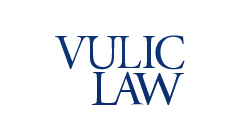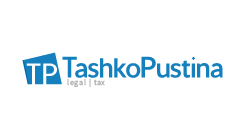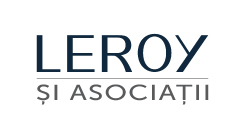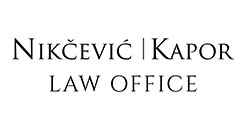The life sciences industry is a rapidly growing market around the world and appears to have special importance in Lithuania. TGS Baltic Partner Dalia Tamasauskaite-Ziliene and Glimstedt Partner Ausra Maliauskaite-Embrekte explore the key developments in the field and the main drivers behind them.
Priority Industry
“The life sciences sector in Lithuania has grown rapidly,” Maliauskaite-Embrekte says. “The 2018 Lithuanian life sciences strategy approved by the Seimas of Lithuania states that life sciences must be one of Lithuania’s priority industries,” she notes. “According to the data of the Lithuanian statistics department, life sciences companies are among the most profitable in the country,” she highlights, adding that around “90% of life sciences production is exported, to more than a hundred foreign countries,” and “Lithuania’s life sciences ecosystem contributes 2.5% to Lithuania’s GDP.”
“The sector seems to be much dominated by private equity funds – either directly or through existing healthcare sector players backed by private equity funds,” Tamasauskaite-Ziliene adds. “Baltic funds BaltCap, INVL Baltic Sea Growth fund, 1 Asset Management, Polish Innova Capital, etc. deserve a mention.”
As for specific deals, “the main transactions that took place this year are related to private clinics and the biotech sector,” Maliauskaite-Embrekte notes. “In March 2022, the largest transaction in the Lithuanian healthcare sector took place, which is the merger of InMedica and the MediCa Group. In January 2022, InMedica also signed an agreement for the acquisition of 100% of the shares in the Vilnius Implantology Center Clinic.”
Powered by…
Tamasauskaite-Ziliene and Maliauskaite-Embrekte highlight several factors contributing to Lithuania’s growing life sciences sector. “Consolidation has been a dominant driver for transactions in the sector, primarily in healthcare services, but also in related services and the pharmacy field,” Tamasauskaite-Ziliene points out, adding that there are trends for “consolidation in the private healthcare sector with big competition among private healthcare clinics for consolidating smaller players and expanding coverage of their services throughout the country.” In addition, she says, “private healthcare players also used M&A as a means to expand the scope of their provided services by adding-on beauty, dental, and other specialized clinics.”
For Maliauskaite-Embrekte, the main strength that enables rapid growth in this area is state support. “The Lithuanian government ensures exceptional support for the smooth start of a business in Lithuania,” she notes. “For example, companies considering direct foreign investments in Lithuania can apply for state financing.” According to her, “there are also significant tax incentives for large-scale projects, including zero corporate tax for 20 years.” On top of that, she highlights that “there are seven free economic zones in Lithuania, which provide good conditions for business development, as they offer the premises of ready-made industrial sites with physical and/or legal infrastructure, support services, and tax incentives.”
Maliauskaite-Embrekte additionally notes there are favorable conditions for progress in the fields of biotech and research and development: “Lithuania has plenty of talented life sciences professionals – more than 15,000 specialists work in the sector and the number is growing rapidly every year, due to six universities that are offering biotech-related study programs.” She adds that, “apart from strong academic institutions, reliable and robust research infrastructure also contributes to the Lithuanian life sciences industry. During the last decade, more than EUR 1 billion was invested in the life sciences infrastructure of the country. Research-driven businesses provide a supportive environment and collaborative opportunities for both start-ups and established industry players.”
Beyond these factors, Tamasauskaite-Ziliene points to several specific fields in the life sciences sector that benefited from recent changes in lifestyle. According to her, in 2022, interest increased significantly in the wellness and veterinary sectors. “The interest may have been sparked by favorable lifestyle change-driven trends, such as increased interest in personal health and well-being, as well as a growing attention to pets,” she notes.
Maliauskaite-Embrekte also says the pandemic played a certain role: “in recent years, the COVID-19 pandemic had a significant impact on the investments of the Lithuanian life sciences sector,” she notes. “Although the COVID-19 pandemic caused many challenges, it also led to many innovations in the life sciences industry. During the past years, some companies began to develop prototypes of a candidate vaccine against the COVID-19 virus.” According to her, “Lithuania was heavily involved in the supply chain of vaccines against COVID-19, since the components necessary for mRNA-type vaccines are produced in the Vilnius branch of Thermo Fisher.”
Grounds for Optimism
All things considered, Maliauskaite-Embrekte and Tamasauskaite-Ziliene believe there are grounds for optimism for Lithuania’s life science sector in the years to come. “The government’s plan also stipulates that the life sciences industry should create 5% of GDP by 2030,” Maliauskaite-Embrekte notes. Additionally, she highlights, “according to the Minister of Economy and Innovation of Lithuania, the current aim is to refine the long-term development strategy of this sector and to prepare a life sciences agreement, which would promote talent attraction, innovation, export, and investment increase.” Therefore, she concludes, “the future prospects are optimistic”.
Tamasauskaite-Ziliene shares a similar view: while “it is quite difficult to make some predictions,” despite the current context, there is a reason to remain cautiously positive. “Besides the clear current trends, for some months, at the moment the interest has not yet stopped or reduced significantly,” she notes, adding that “we have also been hearing of potential acquisitions contemplated in the sector in the future.”
In terms of expected specific patterns in the life sciences market, Tamasauskaite-Ziliene says that “demand for consolidation, especially in highly fragmented fields such as the dental, veterinary, or wellness sectors, should continue. In addition, in an economic downturn, smaller market players may use the chance to benefit from investments allowing them to live through difficult times. Therefore, I would tend to guess that – if a halt occurs – it would rather be of a temporary nature.”
This article was originally published in Issue 9.12 of the CEE Legal Matters Magazine. If you would like to receive a hard copy of the magazine, you can subscribe here.





























